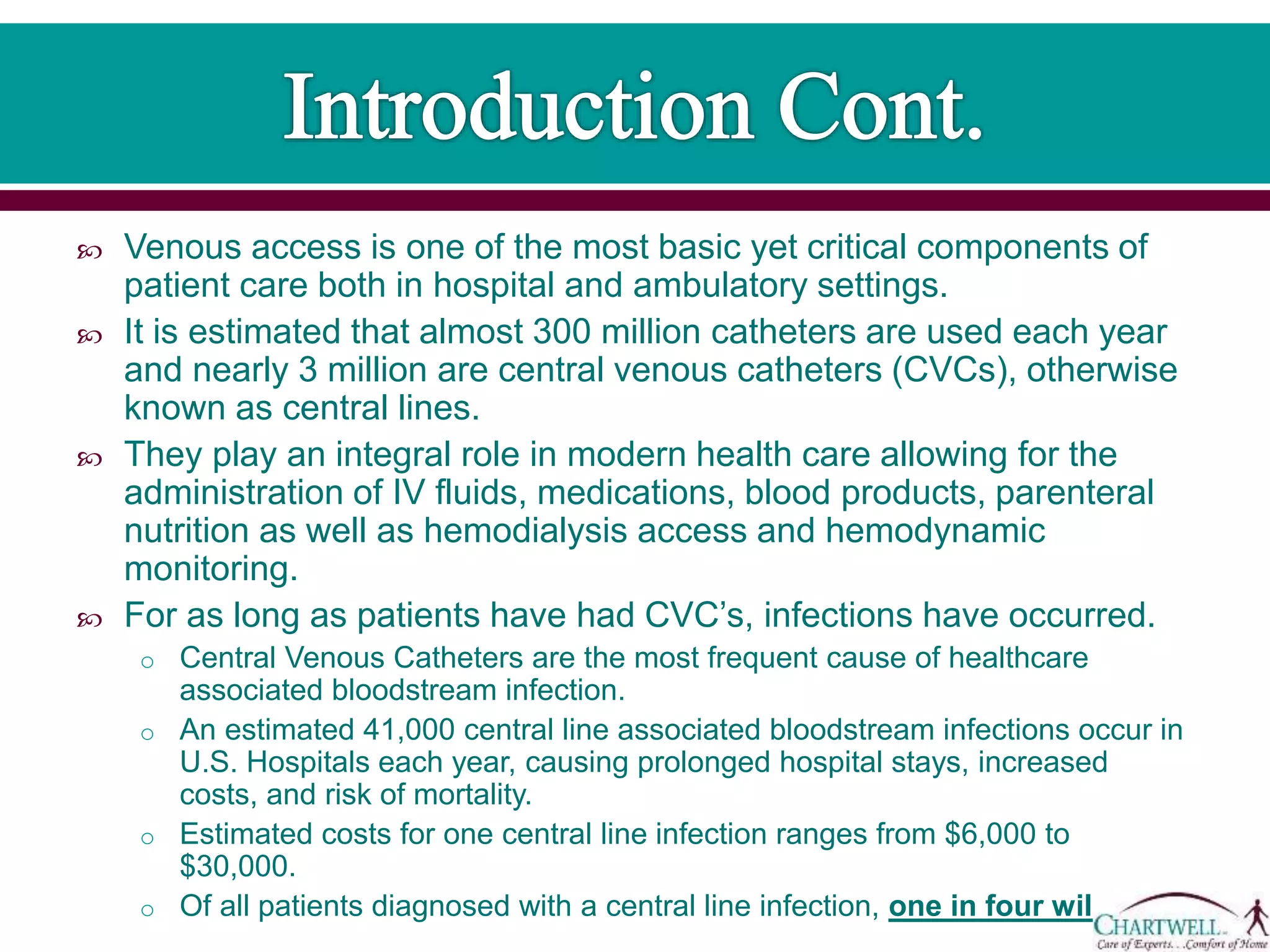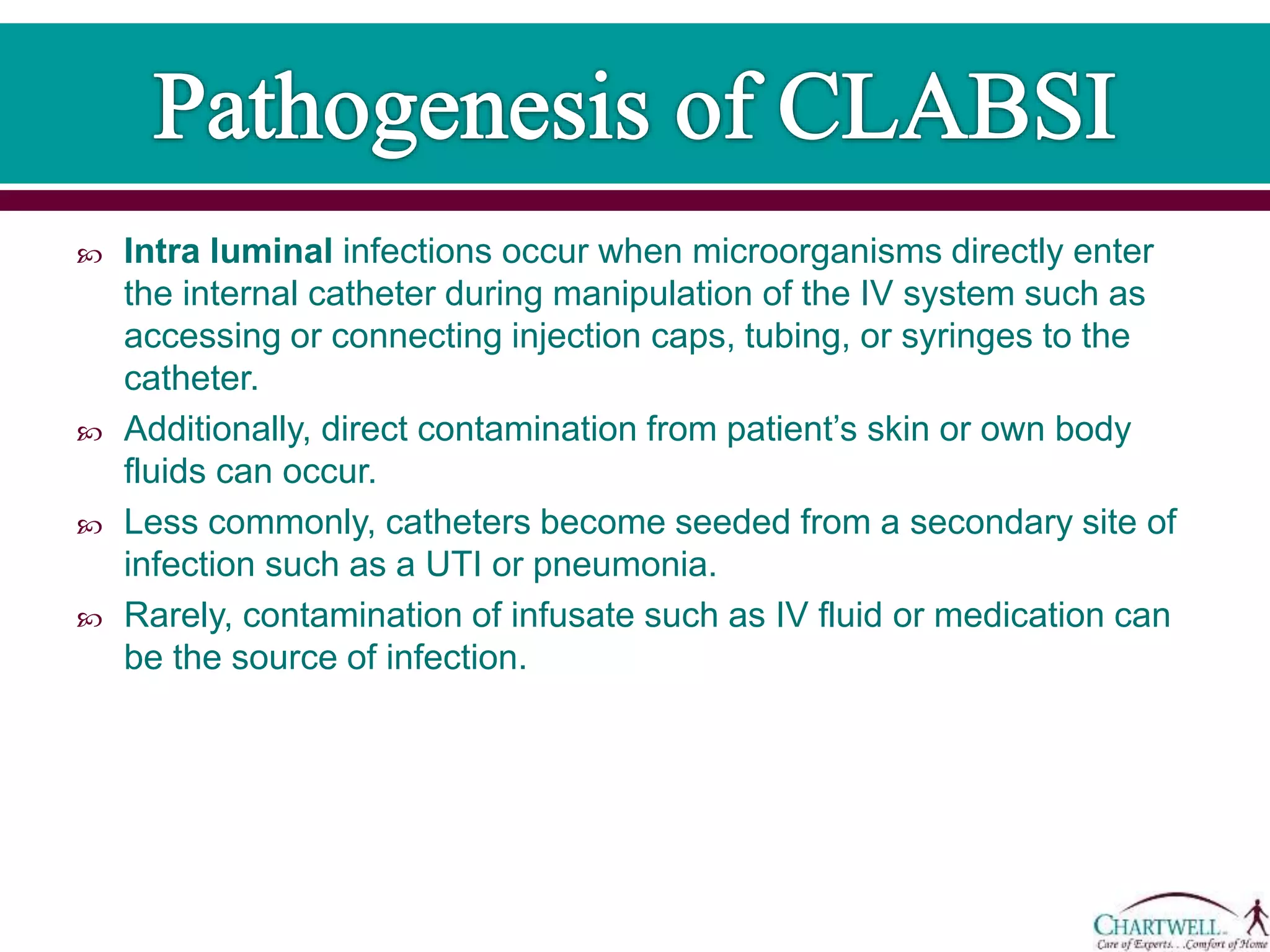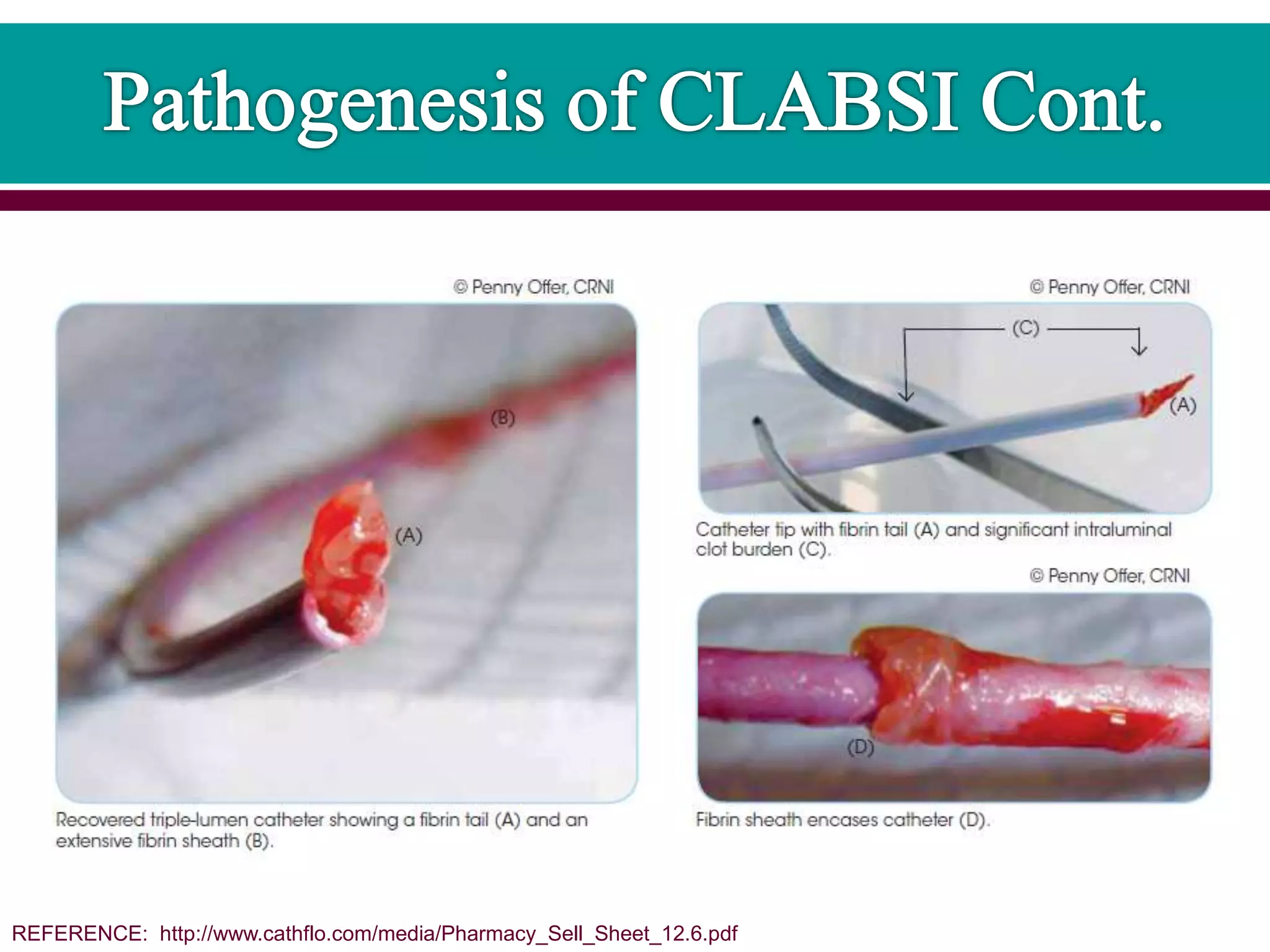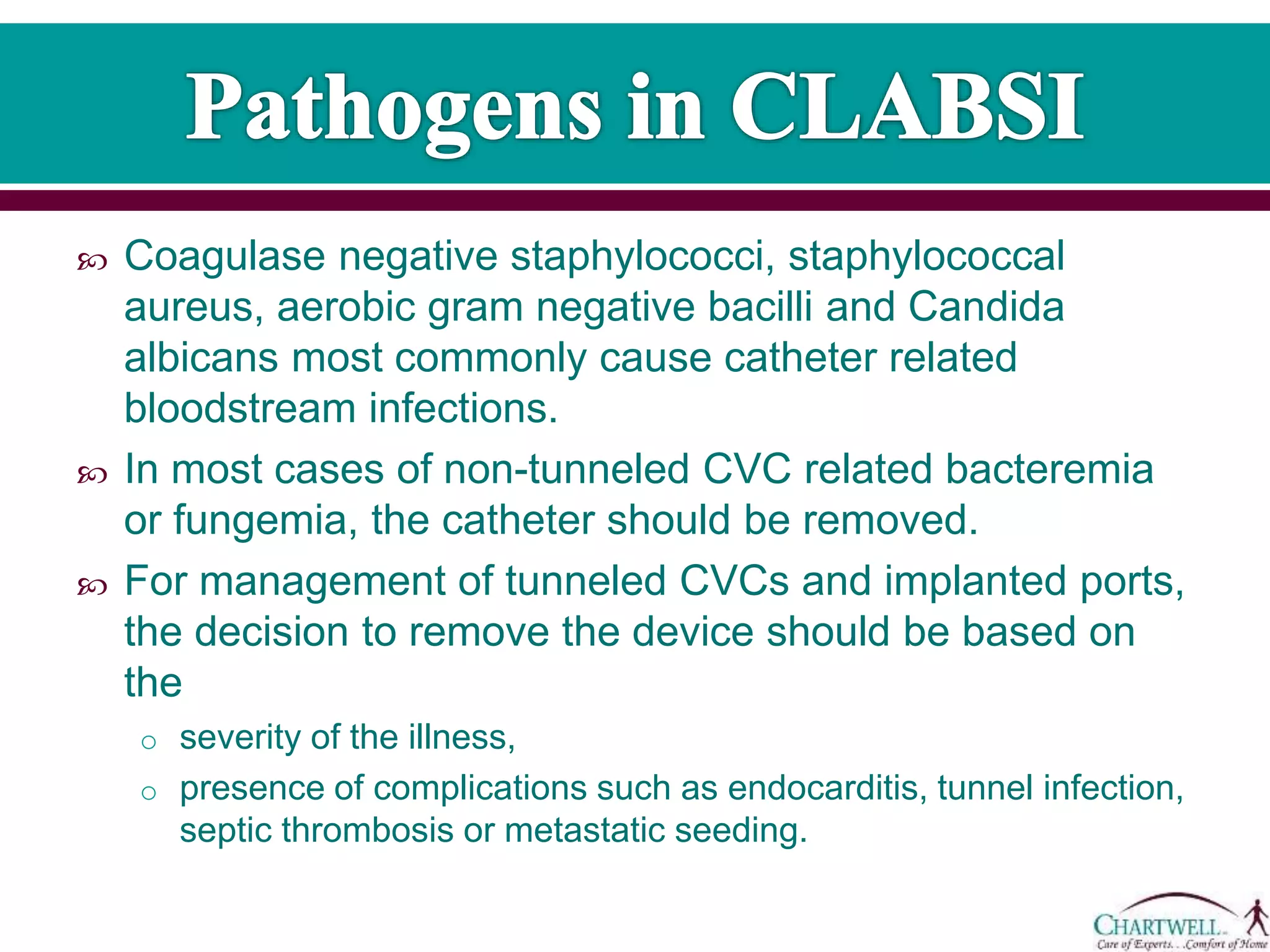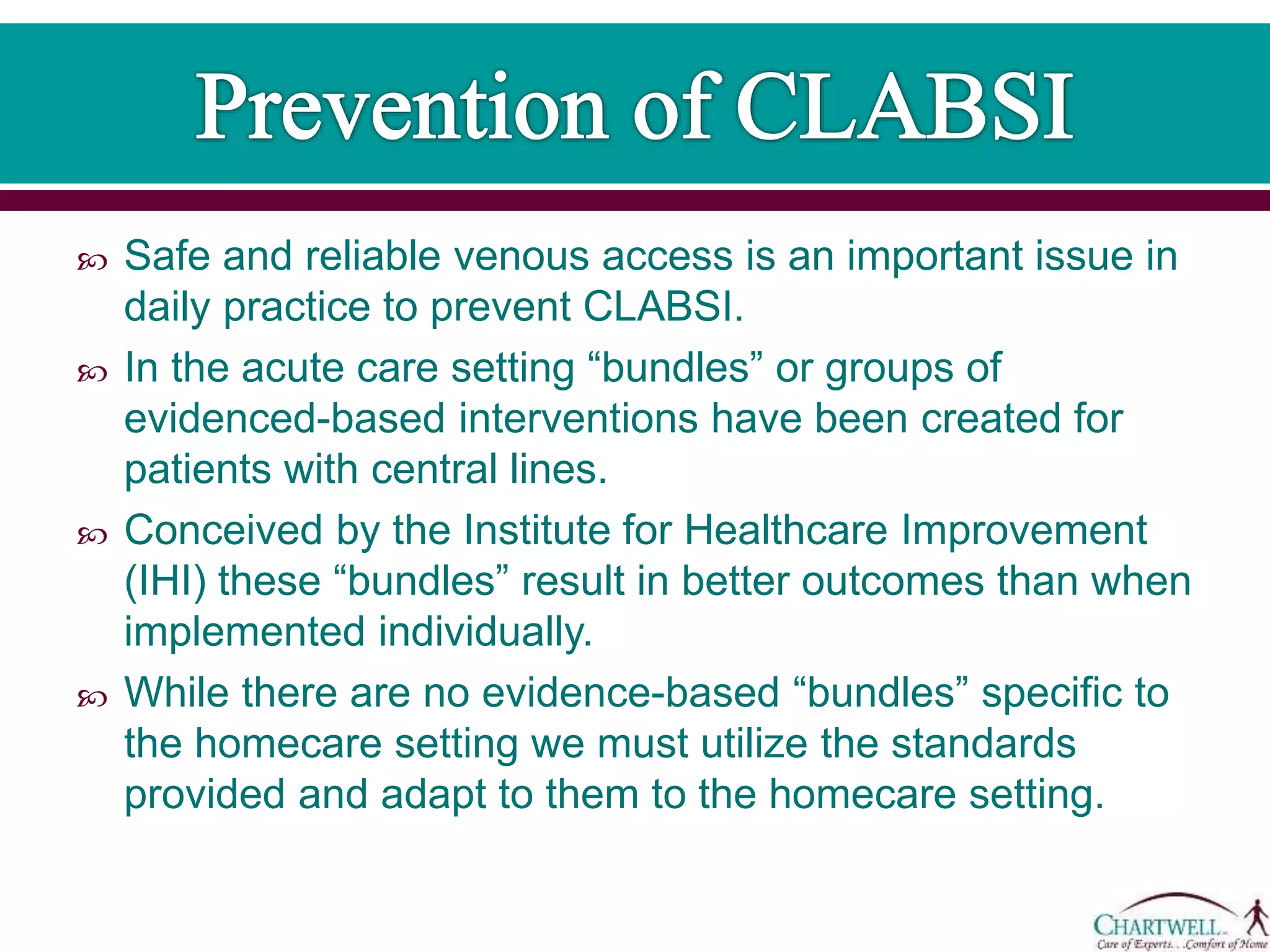There are two terms used to describe central line infections: central line-associated bloodstream infections (CLABSI) and catheter-related bloodstream infections (CRBSI). CLABSI is defined as a bloodstream infection where the patient had a central line within 48 hours before onset. CRBSI requires lab testing to confirm the catheter as the infection source. Central lines are essential for patient care but can lead to costly and life-threatening infections if not properly inserted and maintained. Adhering to evidence-based practices like maximum barrier precautions and chlorhexidine skin antisepsis can significantly reduce central line infection rates.


